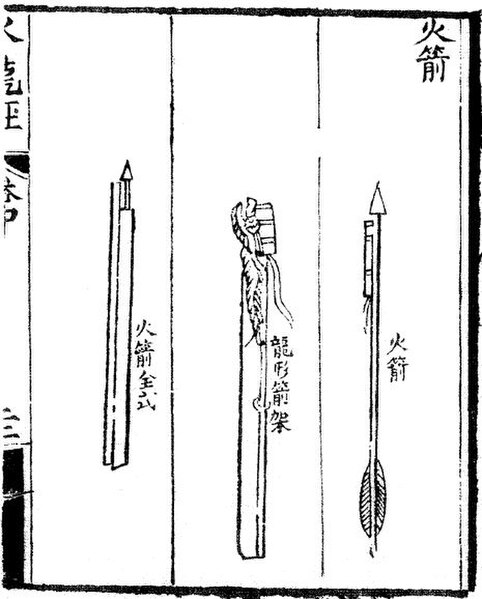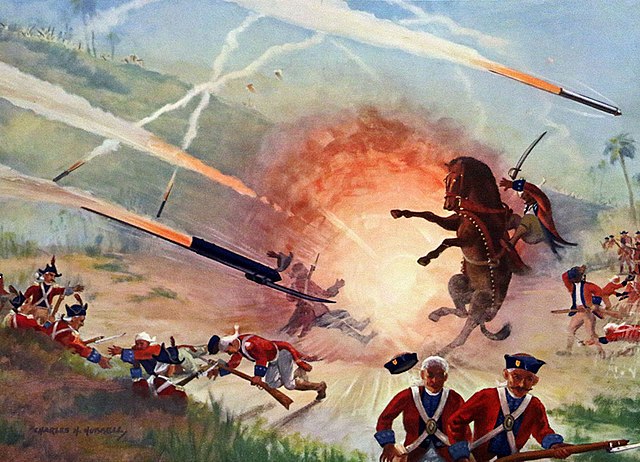JATO is a type of assisted take-off for helping overloaded aircraft into the air by providing additional thrust in the form of small rockets. The term JATO is used interchangeably with the term RATO, for rocket-assisted take-off.
The first "rocket-assisted" take-off in the United States, a GALCIT booster fitted to an ERCO Ercoupe, at March Field, California, 1941
A German Arado 234 Blitz fitted with Starthilfe RATO units
Starthilfe RATO (left) on the starboard wing of Arado Ar 234 B-2 at the Steven F. Udvar-Hazy Center in Virginia.
The US Navy's Blue Angels C-130 Hercules "Fat Albert" using JATO during takeoff
A rocket is a vehicle that uses jet propulsion to accelerate without using the surrounding air. A rocket engine produces thrust by reaction to exhaust expelled at high speed. Rocket engines work entirely from propellant carried within the vehicle; therefore a rocket can fly in the vacuum of space. Rockets work more efficiently in a vacuum and incur a loss of thrust due to the opposing pressure of the atmosphere.
A Soyuz-FG rocket launches from "Gagarin's Start" (Site 1/5), Baikonur Cosmodrome
Rocket arrows depicted in the Huolongjing: "fire arrow", "dragon-shaped arrow frame", and a "complete fire arrow"
Mysorean rockets and rocket artillery used to defeat an East India Company battalion during the Battle of Guntur
William Congreve at the bombardment of Copenhagen (1807) during the Napoleonic Wars








